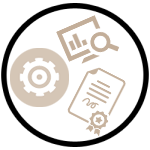Perhaps you have an idea for a new product simmering in the back of your mind. You’ve done a few Google searches, but haven’t found anything similar. This makes you confident that you have stumbled upon the NEXT BIG THING. Every day inventors tell me they “haven’t found anything like it,” and while that’s a good start, chances are that they haven’t been looking in the right places. [Source: Mark Nowotarski/IPWatchdog]

Before investing additional money and resources, it’s the right time to find out definitively if the invention is unique, determine if there is a market for it, and explore how to make it better.
Inventors should do a search online with a goal of finding two or three competitive products. If they’re scared to do the search, that’s a good thing, because in my experience, it usually means they’re on the right track.
Yes, the goal should be to find other products in the market that are already attempting to solve the same problem as their invention. That demonstrates that a solution is actually needed. If there is a need by a large enough group of people, then they stand a far better chance of turning the invention into a profitable venture.
Inventors should go to a patent agent or patent attorney with examples of two or three other similar products, and after signing a retainer agreement (which establishes the agent/client relationship), the discussion then turns to the specifics of the product including drawings, mockups, and/or prototypes.
At this point, the agent or attorney will do a more thorough search of the U.S. Patent Office and other applicable databases in the United States and/or internationally. They are determining if this invention is indeed unique, or if there are even more, similar patented products.
Some inventors consider doing the search of the Patent Office on their own, but there are several downsides to this plan. Their emotional attachment to the invention will cloud their judgment, and they will steer away from finding other products that are similar. Although chances are they have already identified a few other competitors, searching the U.S. Patent Office is a more intense process. From my experience with clients who have done their own search, they have ignored similar products that have already been patented because they don’t want to know that their idea isn’t as unique as they once thought it was.
However, finding additional similar products does not mean that all is lost. The strategy changes to comparing the proposed invention with the patented one, and discussing ways to improve it and make it patentable. A good patent agent or attorney will provide objective insight at this phase. The process is to take the invention, ignore the parts that have already been incorporated into another patent or patents, and the remainder is a patentable invention.

For example, did you know Thomas Edison did not invent the light bulb? Another inventor had already obtained a patent on the basic idea of a light bulb (creating a vacuum of air in a glass bulb, and the need for a graphite filament) but it was Edison who invented a patentable method to consistently attach the white-hot filament to the lead wires coming in the bulb, and to ensure a uniform diameter of the filament, which became the light bulb that changed the world.
After an invention has been protected with a provisional patent application, inventors will be able to share their idea with specific people with the goal of helping get to the next step. Once a provisional patent is on file, the clock starts ticking toward the one year deadline to file a nonprovisional patent application.
Inventors need to be prepared for a lot of work in that year, ranging from conducting market research to assess demand and profitability, to getting set up with a manufacturer, and investigating funding sources. If after that it’s determined that the idea is commercially viable, it’s appropriate to more fully protect the idea with a nonprovisional and perhaps even international patent applications.
Read article HERE | SOURCE: IPWatchdog
